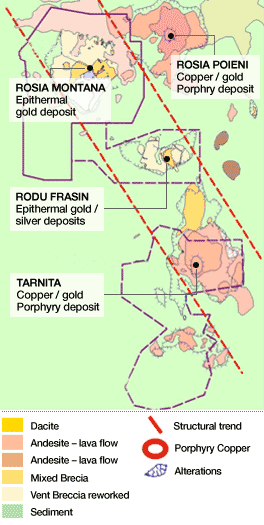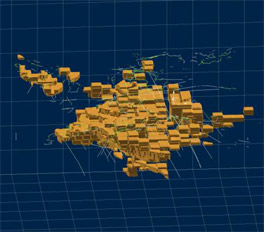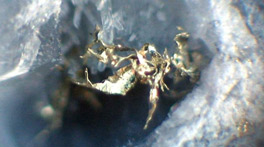The Bucium exploration concession is located approximately 5km to the south east of Rosia Montana in Western Transylvania and bordering the Rosia Montana exploitation permit.
Geology
The Bucium area is hosted within a sequence of Cretaceous sediments, predominantly fine grained shales with subordinate sandstones and conglomerates, into which Neogene magmatic rocks have been intruded and extruded. The volcanic rocks consist mostly of dacite, quartz andesite, andesite and basalt. Pyroclastics, contact breccias, and intrusive and phreatomagmatic breccias have been mapped. Associated with these lithologies are Miocene volcano-sedimentary rocks including mixed lithology breccias.
The Bucium license covers the southern extensions of a major 15 kilometre long regional NNW-SSE structural corridor, interpreted to display right-lateral strike slip movement along which a number of gold-silver epithermal as well as copper-gold porphyry style mineralization prospects and deposits are known to occur. Historical mining and exploration has occurred along the entire length of the trend. Geophysical interpretation based on an aeromagnetic survey conducted by the Romanian State Exploration Company suggests that a major granitic pluton lies beneath both Bucium and Rosia Montana.
The occurrence of deposits and mineralization is seen to occur on the intersection of the major NNE-SSE structural corridor and intersecting NE-SW trending structures.
Porphyry copper-gold mineralization has been identified at Bucium Tarnita, where historical drilling of a subvertical andesitic body has returned a sub-vertical zone of porphyry style copper (+ gold/silver) mineralization. The microfractured andesite contains fractures and veinlets of chalcopyrite associated with intense potassic and phyllic style alteration within a broad advanced argillic halo.
The Tarnita porphyry deposit covers a surface area measuring 700m x 700m and has the potential to host a large tonnage deposit. Historical exploration of the deposit by the Romanian State has included underground development (exploration drives and crosscuts), surface and underground diamond drilling along with surface pitting and trenching. During exploration, vertical surface diamond drill holes have been drilled to depths of up to 1,200 metres. Gabriel has not conducted any exploration to date at Tarnita.
The Rodu gold-silver deposit, located west of Frasin at the northern end of the central zone, occurs in intensely altered, pyroclastic dacite vent breccia above a non-outcropping dacite intrusive. It is comprised of a multiple vein-swarm, with nine major veins up to 1m wide, having a strike length of over 1000 m and a width of more than 500 m within pervasively altered and mineralized vent and reworked breccias, hosted within a maar-diatreme complex. The veins strike NNW and dip moderately to the west within a broad halo of sub-horizontal silicification hosted disseminated gold mineralization. Previous mine workings and exploration adits and underground drill holes have tested this vein swarm over an area measuring 500 m by 500 m (in plan) to approximately 200 m vertical depth below surface.
The Frasin gold-silver deposit consists of a dacitic intrusive body hosted in Cretaceous sediments and Miocene volcaniclastics and vent breccias. The dacite contains multiple vein, stock work and pervasive disseminated mineralization associated with intense hydrothermal alteration (quartz-adularia overprinted by carbonate - clay-quartz) similar to the Rosia Montana deposit. The dacitic dome outcrops as a hill and has a significant large tonnage resource potential.
Historical exploration comprises surface pitting and trenching, with channel sampling and one deep (1200 m) stratigraphic drill hole of the hill, which has been subjected to extensive historical surface and some sub-surface mining. The altered and mineralized dacite body measures approximately 700m x 500m with additional altered and mineralized outcrops considred to part of the same body located to the east which have been untested.
The two properties are located adjacent to each other and the Rodu deposit is interpreted to represent the maar-diatreme structural zone associated with the Frasin dacite dome complex.

Above: Surface geology of Rosia Montana and Bucium deposits.

Above: A block model of the Bucium resource

Above: Visible gold in a drill core from Bucium, shown under magnification.


